#Leonor de Austria
Explore tagged Tumblr posts
Text
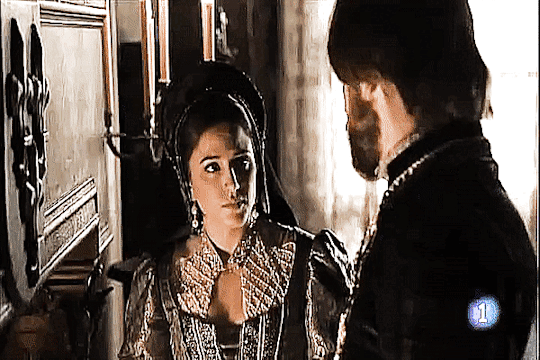


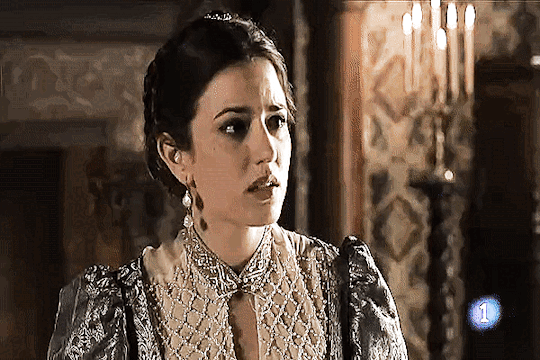
The English ambassador, Francis Bryan, sent a detailed description of the relations between Francis and Eleanor to Henry VIII. They were not a happy couple because “being both in one house, they lie not together once in four nights” and the French King “speaks very seldom unto her openly”. He also spent hours on end in his mother’s chambers and rushed to his mistress whenever he pleased. Two years later the King’s sister told the Duke of Norfolk that no man could be less satisfied with his wife than her brother, who failed to have sexual relations with his wife for seven months. When the stunned duke asked why, Margaret replied that it was “because he does not find her pleasing to his appetite”. Eleanor, Margaret continued unabashed, “is very hot in bed and desired to be too much embraced”, causing Francis to shun her company. Perhaps one of the reasons for Francis’s distaste was Eleanor’s appearance. Brantôme wrote that he heard rumours that “when she was dressed, she seemed a very beautiful princess of rich and beautiful height, but when she was undressed, the height of her body appeared so long one would have believed that she was a giant, but so short were her legs and thighs, she made one think of a dwarf”. Whatever she looked like, the new Queen of France found life at court difficult. Her relationship with Francis turned sour, she had to compete for his affection with his mother and mistress and even his erudite sister, who seemed kind and approachable, favoured Anne de Pisseleu, with whom she shared similar interests in literature and religion. Margaret, it seemed, preferred the company of her mother and Francis’s mistress to that of Eleanor’s.
Sylvia Barbara Soberton, Golden Age Ladies: Women Who Shaped the Courts of Henry VIII and Francis I
#eleanor of austria#leonor de austria#francis i#francois of france#marguerite de navarre#marguerite d'angoulême#french history#carlos rey emperador
39 notes
·
View notes
Text

Portrait of Eleonore of Habsburg or Austria (1498-1558) Queen of France. French School.
#royaume de france#maison de valois#eleonore d'autriche#reine de france#maison de habsbourg#vive la reine#full length portrait#kingdom of france#house of valois#house of habsburg#royalty#haus habsburg#infantes de españa#leonor de austria#reina de francia#infanta de españa#casa de austria#monarquía española#reino de españa#reino de francia
3 notes
·
View notes
Text

A raíña Leonor de Austria (anónimo)
7 notes
·
View notes
Photo
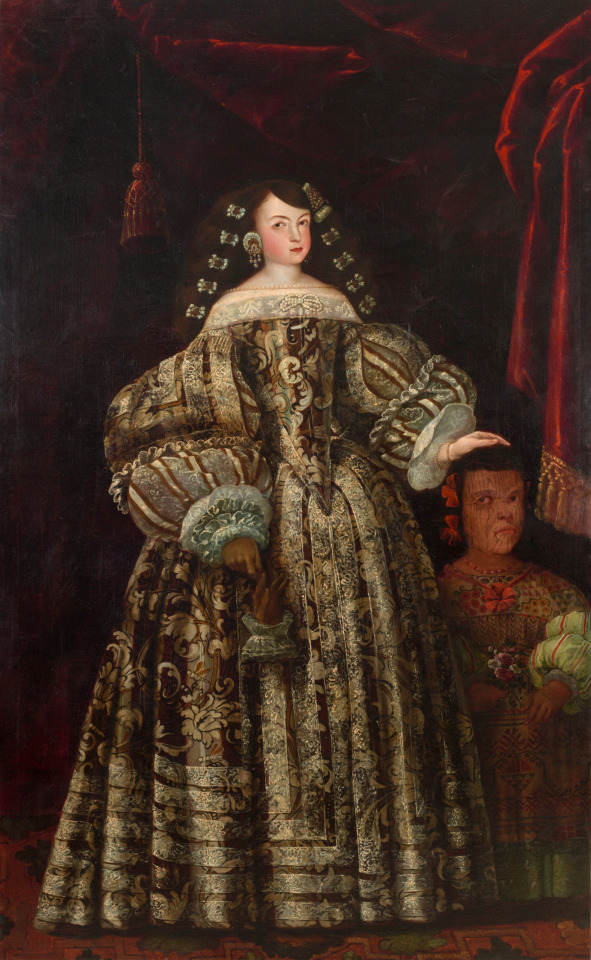
Antonio Rodríguez Beltrán, attributed (Spanish, 1636-1691) María Luisa de Toledo e indígena, 1670 Museo Nacional del Prado
Doña María Luisa de Toledo y Carreto, Marquesa de Melgar de Fernamental, was the only daughter of Don Antonio Sebastián de Toledo Molina y Salazar, II Marquis de la Mancera and Viceroy of New Spain -between 1664 and 1673-, and of his first woman, D. Leonor de Carreto. And, therefore, she was also the granddaughter of another viceroy, in this case of Peru, D. Pedro de Toledo y Leiva, who held that position between 1639 and 1648. And also, she was the sister-in-law of a third viceroy, D. Gaspar de la Cerda y Sandoval, Count of Galve, her husband's brother, who held office in New Spain between 1688 and 1696. She was a great-great-granddaughter of the first Duke of Alba de Tormes, one of the leading noble houses in Spain, and her husband was the son of the Dukes of Pastrana and the Infantado, another of the main noble families. So, in her person, María Luisa combined an entire noble inheritance linked to some of the great Spanish aristocratic families and to the main positions in the American viceroyalties. She lived part of her childhood and adolescence in the city of Mexico, where, around 1670, she must have made this portrait of her. She returned to Spain, together with her father, in 1674.
She married Joseph de Silva, linking in this way with one of the most powerful houses in the Peninsula, which held the dukedoms of Pastrana, Infantado and Lerma among many other titles, although all of them were part of the inheritance of the eldest son, for which reason None of the consorts had, at the time of the marriage, a noble title. The title enjoyed by María Luisa and her husband, Marquises of Melgar de Fernamental, was granted as a marriage dowry by the Queen herself, Mariana of Austria, in the name of King Carlos II.
The dwarf woman who accompanies her would come from the Chichimeca area, due to the tattoos that adorn her. She has been represented wearing a long and straight huipil, which is superimposed over a green skirt or dress whose lower part protrudes from the previous one. The huipil has been arranged "a la española", that is to say, it seems to be cinched at the waist and has wide added sleeves and a bottom edge with an ova-shaped lace band. The presence of this small indigenous woman was highlighting the uniqueness and exoticism, and therefore the power and prestige of her family. The color of the complexion, the tattoo and even the type of clothing that the little woman wears reveal her connection with American places and the access that the protagonist of the canvas exhibited in relation to some networks of circulation of transoceanic goods and products. New Spain (modern day Mexico) came to be called Mexico in 1821, after the Mexican War of Independence. The viceroyalty was dissolved and the Mexican Empire was established.
#european history#european art#spanish art#spanish history#new spain#spain#spanish#female portrait#world history#the americas#america#americas#indigenous#art#historical art#mexico#west indies#history of mexico#oil painting#1600s#royal#royaly#noble#nobility#María Luisa de Toledo e indígena#María Luisa de Toledo#indigena#indigenos#north america
62 notes
·
View notes
Text
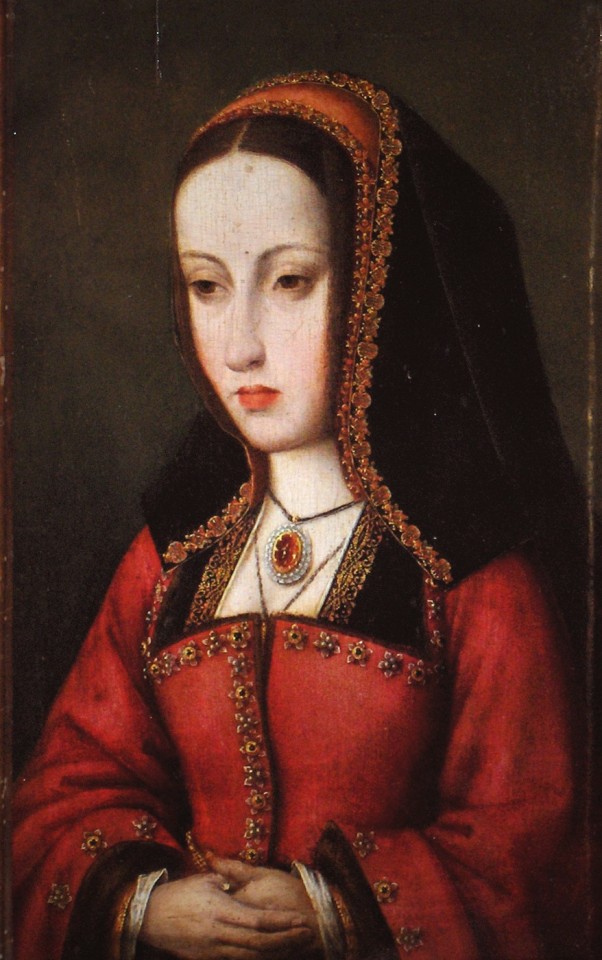
Jacob van Lathem
Juana I de Castilla (Juana la Loca) óleo sobre tabla. 1495
Nacida en la ciudad de Toledo el 6 de noviembre de 1479, Juana I de Castilla era la tercera hija de los Reyes Católicos. La muerte de sus hermanos mayores y de uno de sus sobrinos la convirtieron en la heredera de las Coronas de Castilla y Aragón en el año 1500.
Juana era inteligente, ya que aprendió latín y poseía y tenía notables aptitudes para la música.
Los Reyes Católicos la casaron con el archiduque austriaco Felipe el Hermoso ,archiduque de Austria, duque de Borgoña, Brabante y conde de Flandes. Tuvo con él seis hijos:
Leonor, reina de Francia
Carlos I de España
Isabel, reina de Dinamarca
Fernando I del Sacro Imperio Romano Germánico
María, reina de Hungría
Catalina, reina de Portugal
La llamaban "Juana la Loca" se cuenta, por su conducta irremediable de apasionados celos que sentía por las infidelidades de su esposo Felipe I, al que ella amaba con tal fervor, que la llevó supuestamente a la locura.
Los investigadores nos cuentan que quizá Juana no estaba tan loca, si no que así la quisieron otorgar este título para poder terminar encerrándola y de está forma quitársela de en medio para que el siguiente en la línea de sucesión a la corona de Castilla fuera otro a conveniencia.
El 25 de septiembre de 1506 murió su esposo Felipe I el Hermoso, según algunos, envenenado, lo que nos lleva a pensar que quizás hubo un complot no solo contra la Reina Juana I, si no también contra el Rey Felipe I para poder conseguir el trono por parte de Fernando el católico pues el confinamiento de doña Juana , por su presunta incapacidad mental, y la muerte de Felipe, era esencial para la legitimidad en el trono castellano, primero de su padre, Fernando, y después de su hijo, Carlos I.
Desde que su padre la recluyera, en 1509, la reina Juana permaneció cuarenta y seis años en una casona-palacio-cárcel de Tordesillas, vestida siempre de negro y con la única compañía de su última hija, Catalina, sus damas y un retrato de su amado esposo Felipe I.
📍Museo Nacional de Escultura de Valladolid
5 notes
·
View notes
Text
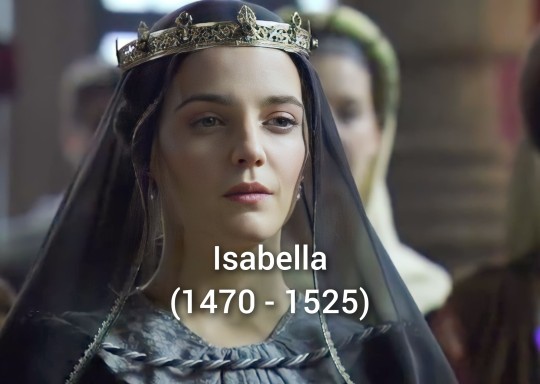
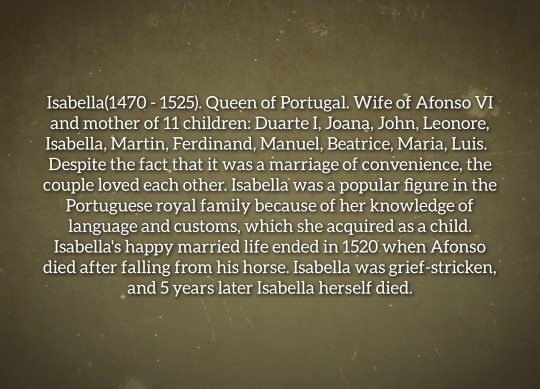

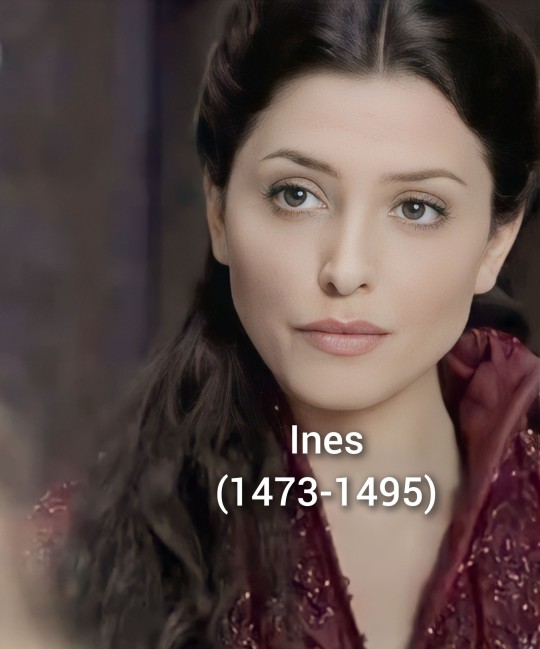

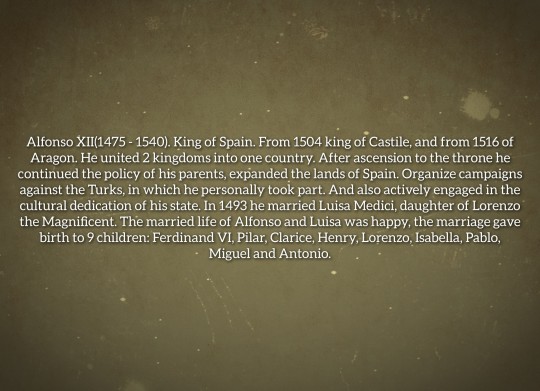

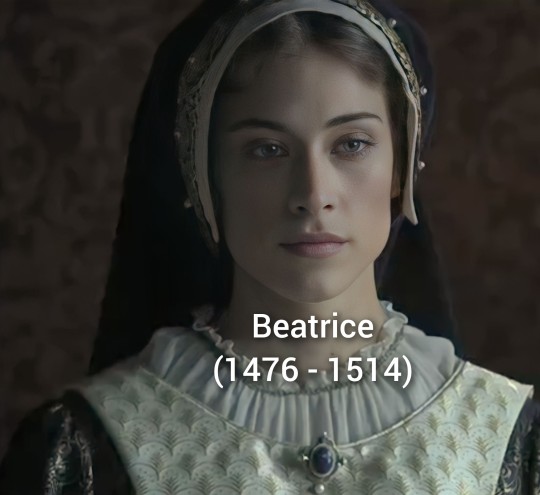


AU House of Trastamara: Children Isabella of Castile and Ferdinand of Aragon.
Isabella(1470 - 1525). Queen of Portugal. Wife of Afonso VI and mother of 11 children: Duarte I, Joana, John, Leonore, Isabella, Martin, Ferdinand, Manuel, Beatrice, Maria, Luis. Despite the fact that it was a marriage of convenience, the couple loved each other. Isabella was a popular figure in the Portuguese royal family because of her knowledge of language and customs, which she acquired as a child. Isabella's happy married life ended in 1520 when Afonso died after falling from his horse. Isabella was grief-stricken, and 5 years later Isabella herself died.
Ines(1473 - 1495). Married to the Venetian Doge Marcantonio Trevisan. Had two children by him: Piero and Lucrezia. Died before her husband became Doge. Their marriage was not long and very unhappy. Died in childbirth, giving birth to twins.
Alfonso XII(1475 - 1540). King of Spain. From 1504 king of Castile, and from 1516 of Aragon. He united 2 kingdoms into one country. After ascension to the throne he continued the policy of his parents, expanded the lands of Spain. Organize campaigns against the Turks, in which he personally took part. And also actively engaged in the cultural dedication of his state. In 1493 he married Luisa Medici, daughter of Lorenzo the Magnificent. The married life of Alfonso and Luisa was happy, the marriage gave birth to 9 children: Ferdinand VI, Pilar, Clarice, Henry, Lorenzo, Isabella, Pablo, Miguel and Antonio.
Beatrice(1486 - 1514). Queen of France. Wife of Charles VIII. Their marriage was an ordinary political alliance. Beatrice fell in love with her husband after a while, but he paid little attention to her. Charles preferred to spend his time in the company of his favorites. They gave birth to 5: Louis XII, Josephine, Francis I, Joffroy, Madeleine. The French did not like their queen either, but then she was able to win their love. Beatrice did a lot of charity work. She opened churches, free canteens, schools for the poor and their children. Died 10 days after the birth of her two daughters.
John(1478 - 1538). Grand Master of the Order of Santiago. Count de Alburquerque. Husband of Margaret of Austria. John loved his wife very much and was always interested in her opinion on any matter. They had 4 children: Sancha, Miguel, Elvira, Ramiro. He was the main advisor of his older brother. Personally participated in all military campaigns. He suffered the death of his wife, survived her by 8 years. He contracted the plague while returning home from a campaign and died a few days later.
AU: Дети Изабеллы Кастильской и Фердинанда Арагонского.
Изабелла(1470 - 1525). Королева Португалии. Жена Афонсу VI и мать 11 детей: Дуарте I, Жуана, Жуан, Леонор, Изабелла, Мартин, Фердинанд, Мануэль, Беатриса, Мария, Луис. Не смотря на то, что брак был по расчёту супруги любили друг друга. Изабелла была популярной фигурой в португальской королевской семье благодаря тому, что имела неплохие познания в языке и обычаях, которые она приобрела ещё в детстве. Счастливая супружеская жизнь Изабеллы окончилась в 1520 году, когда Афонсу погиб упав с лошади. Изабелла была убита горем, а ещё через 5 лет не стало и самой Изабеллы.
Инес(1473 - 1495). Была замужем за веницианским дожем Маркантонио Тревизаном. Родила от него 2 детей: Пьеро и Лукреция. Умерла до того как её муж стал дожем. Их брак был не долгим и очень не счастливым. Умерла при родах, рожая на свет близнецов.
Альфонсо XII(1475 - 1540). Король Испании. С 1504 года король Кастилии, а с 1516 Арагона. Объединил 2 королевства в одну страну. После восшествия на престол продолжил политику своих родителей, расширил земли Испании. Организовывал походы против турок, в которых лично принимал участие. А также активно занимался культурным просвящением своего государства. В 1493 году женился на Луизе Медичи, дочери Лоренцо Великолепного. Супружеская жизнь Альфонсо и Луизы была счастливой, в браке родилось 9 детей: Фердинанд VI, Пилар, Клариче, Энрике, Лоренцо, Изабелла, Пабло, Мигель и Антонио.
Беатриса(1486 - 1514). Королева Франции. Жена Карла VIII. Их брак был обычным политическим союзом. Беатриса через некоторое время полюбила своего мужа, но он уделял ей мало внимания. Карл предпочитал проводить время в обществе своих фавориток. У них родилось 5: Людовик XII, Жозефина, Франциск I, Жоффруа, Мадлен. Французы тоже не долюбливали свою королеву из за того, что она была испанкой, но потом она смогла заваювать их любовь. А когда она умерла, то искренне оплакивали ее кончину. Беатриса занималась благотворительностью: открывала церкви, бесплатные столовые, школы для бедняков и их детей. Умерла через 10 дней после рождения 2 дочери.
Хуан(1478 - 1538). Великий Магистр ордена Сантьяго. Граф де Альбуркерке. Муж Маргариты Австрийской. Хуан очень сильно любил свою жену и всегда интересовался её мнением по любым вопросам. У них родилось 4 детей: Санча, Мигель, Эльвира, Рамиро. Был главным советником своего старшего брата. Лично участвовал во всех военных походах. Тяжело перенёс смерть своей жены, пережил её на 8 лет. Заразился чумой когда возвращался домой из похода и через несколько дней умер.
Part 1.
#history#history au#spain#spanish#spanish history#isabella#IsabellaofCastile#FerdinandofAravon#royal family#royalty#Isabel#catherine of aragon#henry viii#the tudors#mary tudor#15th century#16th century#au#spanish princess#the spanish princess#spanish royal family#spanish royalty#Royal#Royals
6 notes
·
View notes
Text
Yo creo que mucho antes que vuelva LEONOR BORBON del JUAN SEBASTIAN EL CANO en julio 2025..ya habra ESTALLADO el VERDADERO APOCALIPSIS o DEFINITIVO [es decir habra terminado EL APOCALIPSIS LENTO=cd de FERRAN EXCESO del grupo EXCESO que he descubierto el 1er dia de este año y cuya gira hizo en 2024]..en el que se hace la LUZ..por eso de que fotografie el JUAN SEBASTIAN ELCANO desde la TORRE_RELOJ que INGLATERRA regalo a ARGENTINA por su 1er centenario de INDEPENDENCIA frente al monumento a los masacrados ARGENTINOS por INGLATERRA en una USURPACION TERRITORIAL solo superada por la HUMILLACION de GIBRALTAR A LA PUTA ESPAÑA que tomó INGLATERRA cuando se ENTRONO el BOURBON FRANCES en ESPAÑA apesar de que INGLATERRA perdió al apoyar al candidato de los AUSTRIAS para luego tener la RIDICULA DERROTA de TRAFALGAR [CADIZ] cuando NAPOLEON BONAPARTE pretendia INVADIR INGLATERRA siendo apresado el BUQUE INSIGNIA "EL SANTISIMA TRINIDAD" que intentaron remolcar a GIBRALTAR pero se les hundió.. en VEZ DE TANTA GUERRA CIVIL estos TRAIDORES NO TUVIERON HUEVOS DE RECUPERAR GIBRALTAR NI CON LOS NAZIS mientras sus FAMILIAS REALES van de la MANO pues incluso ALFONSO XIII se caso con una NIETA de la REINA "VICTORIA" de UK.
Así como porque el JUAN SEBASTIAN EL CANO es GEMELO del ESMERALDA cuya CONSTRUCCION se paralizó porque una misteriosa EXPLOSION en un POLVORIN destruyo MEDIA CIUDAD DE CADIZ con el GENOZIDA Y TRAIDOR FRANCO siendo entregado a CHILE como pago por un CREDITO que dio PARA FINANCIAR LA GUERRA CIVIL.
Además desde la TORRE RELOJ de BUENOS AIRES fotografie el hotel SHERATON en cuyo ascensor y piscina fue grabado el SUICIDADO HUTCHENCE de INXS [IN EXCESS=EN EXCESO] que me dio su CERVEZA MEXICANA CORONA en sala DIVINO AQUALUNG con el PAPA JUAN PABLO II en ESPAÑA (14/6/93) y al cual le tiraron cosas en el ESTADIO de VELEZ "EL FORTIN" en avda JUAN BAUTISTA JUSTO de BUENOS AIRES cuando presentaron LISTEN LIKE THIEVES [cuyo video homonimo es post_apocaliptico] siendo su siguiente concierto en MELBOURNE para CARLOS DE INGLATERRA y la malograda LADY DI que llegaron con PARAGUAS y grabando ese directo como ROCKING THE ROYALS..la 2da de las 3 veces de INXS [cuyo tributo argentino NEXT vi junto al restaurant LA VENDETTA del CC FISHERTON frente al aeropuerto ISLAS MALVINAS en ROSARIO, ARGENTINA 31/2/20] fue el día del 31 cumpleaños de HUTCHENCE saliendo una chica en TOP LESS con una TARTA en medio de NEVER TEAR US APART y a continuación fue a NEW YORK a presentar single BITTER TEARS en el programa de ARSENIO HALL y llamó a KYLIE MINOGUE a la que dedico SUICIDE BLONDE del cd X para cortar con ella y la cual voló a NY pero no quiso verla pues ya estaba con HELENA CHRISTENSEN [con la que estaba en COPPENHAGEN cuando un TAXISTA casi les atropella con las bicis por lo que le increpó y el TAXISTA le metió una PALIZA que lo envió al HOSPITAL perdiendo el sentido del OLFATO Y el gusto siendo su siguiente single TASTE IT del cd WELCOME WHEREVER YOU ARE al que siguio FULL MOON DIRTY HEARTS que era el que presentaban en 1994 cuando le grabaron en el SHERATON]
Lo dicho APOCALIPTIZAR es como EVANGELIZAR o incluso PEOR pero para SIEMPRE
P.D. a lo mejor la MANO DE DIOS A INGLATERRA de MARADONA en MEXICO'86 fue un PRESAGIO DE ALGO como el PAPA ARGENTINO al que visito REINA ISABEL II así como el que el velero Argentino de Guerra sea el ARA LIBERTAD
Por cierto..no se significara algo que en la playa EL PALMAR [se llama así por MORIR/PERDER en la batalla de TRAFALGAR que supuso el inicio de las independencias en AME_RICA] encontrará una pintada de MUERTE A FLORENTINO [presidente de REAL MADRID que construye el puente COLGANTE DE CORPUS CHRISTI y cuyo sobrino me llevo al Mega puticlub BARAJAS que fue clausurado cuando tomo la PRESIDENCIA DEL REAL MADRID gracias al FICHAJE del TRAIDOR FIGO_JUDAS del FC BARCELONA]..estando con RAMON VALLE_INCLAN LAPIDO hijo del Ex_presidente de TABACALERA Miguel Angel VALLE_INCLAN [nieto del Escritor del ESPERPENTO=ALGO RIDICULO Y ABSURDO] que acabo en manos de la británica IMPERIAL TOBACCO tras fusionarse con la francesa SEITA cuando su presidente era Antonio Vázquez Romero al que luego pusieron de presidente de IAG o de la FUSION DE IBERIA Y BRITISH AIRWAYS..estoy hasta los HUEVOS DE IDOLOS DE ORO , RELIGIOSOS , PUTAS, VICIOS Y ESPECULADORES O FUSIONADORES COMO FLORENTINO PEREZ







0 notes
Text
Tras dos años de disputas, la ministra de Ecología de Austria, Leonore Gewessler, ratificó la Ley de Restauración de la Naturaleza. El Pacto Verde Europeo busca restaurar el 20% de tierras y ecosistemas degradados para 2050, marcando un precedente en la lucha contra la crisis climática.

0 notes
Text

' yo ni eso, imagina, pero te identifico los tipos de vino con solo probarlos ' una excelente habilidad según su abuelo. ' tendrás que enseñarme eso de la cerveza ¿es muy complicado? ¿no hay riesgo de asfixia? ' bromea, meneando con la cabeza. su mirada vuelve al cuadro y frunce los labios, observándola atentamente. ' leonor de austria, reina de portugal; francisco i de francia, maría de inglaterra ' va señalando a cada una de las personalidades retratadas en la pintura, aunque no son todas. ' también está el autor de la obra, se retrató a si mismo ' comenta como dato interesante. ' muchos solían hacer eso, una especie de firma particular ¿no crees? ' vuelve a mirarlo, esbozando una sonrisa. ante interrogante asiente. ' mi mamá tiene una galería de arte en manhattan ' comenta. ' entonces se mucho de arte, siempre me gustó ' mete las manos en los bolsillos y se da la vuelta. detrás de ellos está la pintura más famosa del museo. ' dicen que da vinci se pintó a si mismo cuando pintó a la gioconda ' tira otro dato que según él es interesante. ' porque no se sabe a ciencia cierta quién es la modelo ¿curioso, no? ' vuelve a esbozar una sonrisa y nuevamente su mirada se posa en acompañante. ' bueno, ahora sí estoy hablando demasiado ¿quieres hacer otra cosa? hay un café muy bueno aquí en el museo, podemos ir ahí. ' ( @sylvcn )

impresión se nota en sus facciones, las cuales hasta hace un momento estaban relajadas, así como todo su porte. sylvan no escucha a la gente, ni siquiera puede prestar atención a los podcast porque termina aburriéndose sin importar si el tema es algo que le interese demasiado, sin embargo está atento a los vocablos que abandona la boca de beau como si fueran a ponerle un examen al finalizar el recorrido. se ríe cuando voltea a verlo al mismo tiempo. ' es un gran truco de fiestas. ' concuerda. ' yo solo sé tomar cerveza de un barril estando de cabeza. me quedo corto contra jesús. ' dejando de lado que es el hijo de dios y todo eso, sylvan cree que la única competencia que tiene con él es esa habilidad. ' ah si, ¿cómo cuales? ' pregunta, pues él solo ha puesto atención a uno de los personajes chiquitos que andan por la esquina. ' nah, estás bien. lograste entretenerme. ' cosa que, de nuevo, es difícil de lograr. ' ¿sabes más cosas de las pinturas aquí? ' ( @cxjng )
3 notes
·
View notes
Photo







Is that the life that waits for me for being the king's son?
#perioddramaedit#carlos rey emperador#henri ii of france#eleanor of austria#henry ii of france#mine: perioddrama#carlosreyedit#house of valois#house of habsburg#leonor de austria#mine.#rayedit.#mine: gifs#perioddramagif#mine
178 notes
·
View notes
Text
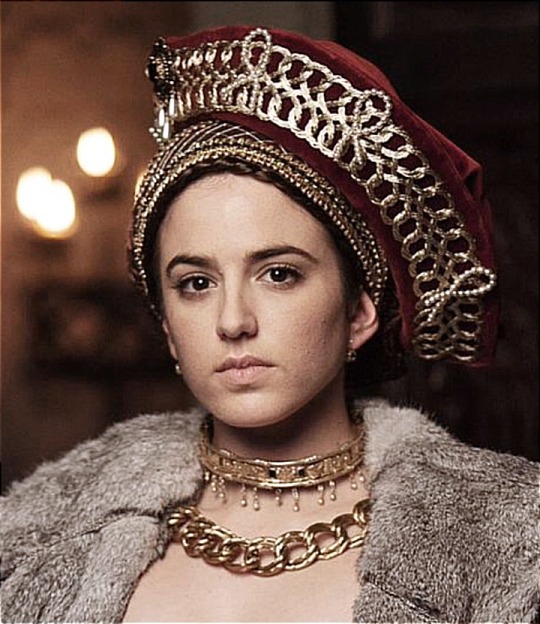
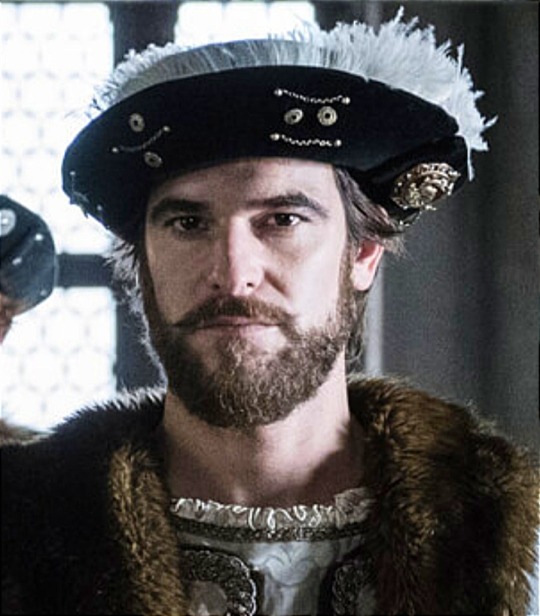

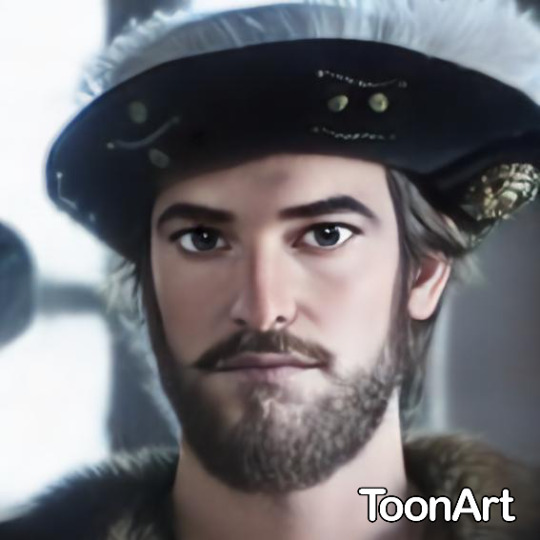
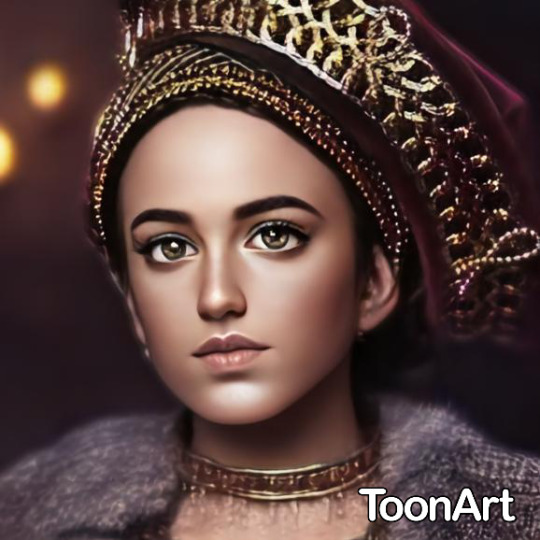


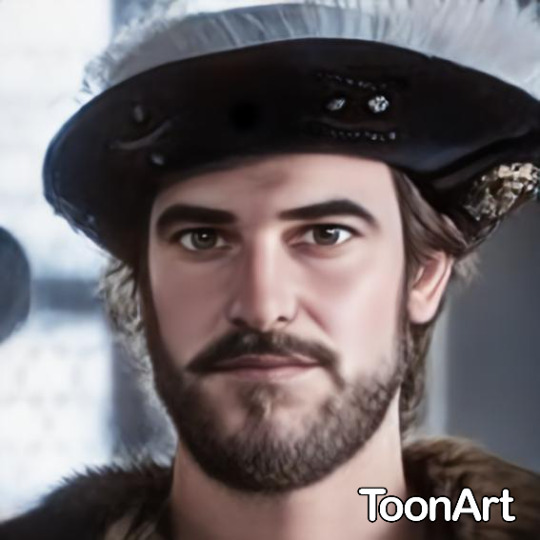
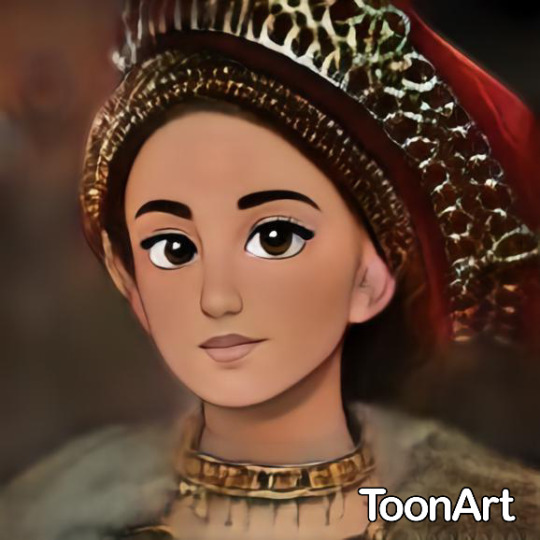
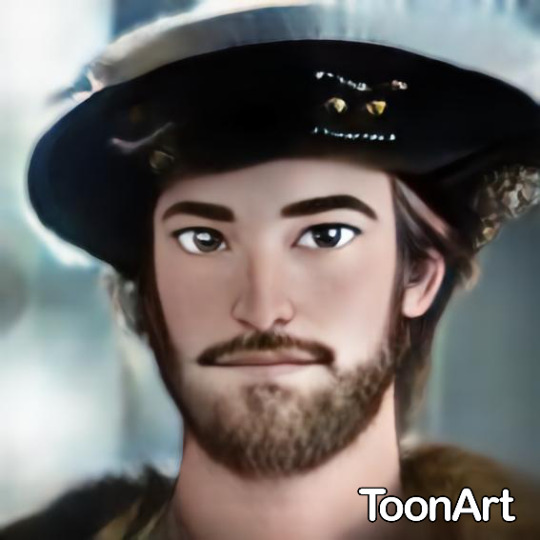
Marina Salas and Alfonso Bassave as Eleanor of Austria and Francis I of France in "Carlos Rey Emperador"
#leonor of austria#eleanor of austria#leonor de austria#francis i#francis of france#marina salas#alfonso bassave#carlos rey emperador#tumblr art
2 notes
·
View notes
Text

Eleanor of Habsburg (1498-1558), Queen of France (1530-1547).
#royaume de france#maison de valois#éléonore d'autriche#reine de france#vive la reine#full length portrait#maison de habsbourg#full-length portrait#infantes de españa#leonor de austria#infanta de españa#casa de austria#reino de españa#kingdom of spain#house of habsburg#reines de france#curious costumes
5 notes
·
View notes
Photo




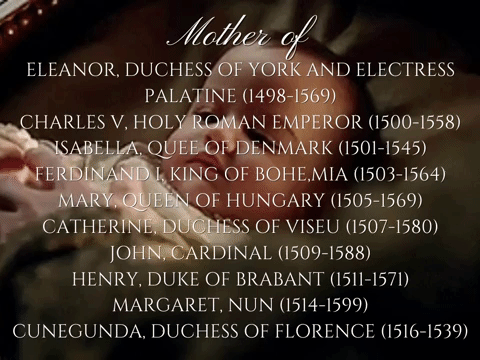

Mejores destinos para los Hijos de los Reyes Católicos- Juana de Aragón
Juana fue al igual que sus hermanas, una de las mujeres mas bellas de su epoca. A diferencia de sus hermanas Isabella y Catherine, Juana poseía los ojos oscuros, largos cabellos castaños y piel rosada teniendo un gran parecido con su padre. La infanta era poco devota, pero lo mantuvo en secreto y era una muchacha pasional como su madre. La princesa estuvo unida a sus hermanos y asistió al matrimonio entre su hermana Isabella con el príncipe Alfonso de Portugal. Juana y su hermano, Juan fueron comprometidos con los hijos del Emperador Maximilian I, los archiduques Philip y Margaret of Habsburg.
Juana viajo a Flandes en 1496 y tras una larga espera, la pareja al final se conoció, sintiendo una gran pasión entre ellos. La pareja se caso rapidamente y desato su gran pasión, pero este gran amor y pasión no duro mucho... Felipe era un joven muy atractivo, pero muy mujeriego y tras Juana quedarse embarazada, el archiduque busco a jovencitas austriacas y a las damas de su esposa.
Aquellas infidelidades le dolieron mucho a la infanta y buscaba continuamente a su marido para impedir que mantuviera romances con otras mujeres. La relación se volvió toxica y se llego a decir que Juana estaba loca por Felipe, ya que llego a incluiso a ordenar que a una de las amantes de su esposo le fueran cortados sus cabellos y cara. Pese a todos estos percanses, los archiduques fueron muy fertiles y llegaron a tener 10 hijos en común que llegaron a buena edad:
Leonor de Austria (1498-1568) Fue Duquesa de York al casarse con Henry Tudor, pero solo tuvieron tres hijos: Leonor, Eugenia y Maximiliano. Tras su divorcio en 1527, se caso en 1531 con Frederick II del Palatinado y tuvieron un hijo, Frederick III.
Charles V de Austria (1500-1558) Fue emperador del Sacro Imperio Romano Germanico. Charles fue llamado "El Carlo Magno Español" por sus combates con Francia y su arrojo en batalla. Se caso con su prima, Isabella of Portugal y tuvieron 5 hijos: Philip I, Maria, Ferdinand, Joanna y John.
Isabella de Austria (1501-1545) Fue reina consorte de Dinamarca al casarse con Christian II. Isabella tuvo 6 hijos con su primer marido: Juan II, Maximiliano, Philip, Dorothea, Christina y Henry. Al morir su marido en 1523, se caso con Christian duque de Schleswig y Holstein y tuvieron 3 hijos: Frederick, Anne y Magnus.
Ferdinand I de Austria (1503-1564) Fue regente y rey de Bohemia-iure uxoris. Se caso con Anne de Hungría y tuvieron 15 hijos en común. Su esposa fue declarada reina de Bohemia junto a Ferdinand, dividiéndose los territorios de Hungría y Bohemia.
María de Austria (1505-1569) Fue reina consorte y regente de Hungría al casarse con Louis II de Hungría. La pareja tuvo un hijo: Louis III y al morir su marido en 1531, María se convirtió en la regente de su hijo por 10 años.
Catalina de Austria (1507-1580) Fue duquesa de Viseu al casarse con su primo, John of Avis. Catalina tuvo 4 hijos vivos con su marido: Manuel, Felipe, María Manuela y Juan Manuel.
Juan de Austria (1509-1588) Fue cardenal y confidente del Papa Clemente VII. Juan tuvo un romance con una sirvienta bohémica con la cual tuvo 3 hijos: Alexander, Anna Joanna y Federica.
Enrique de Austria (1511-1571) Fue duque de Brabante desde 1549 a su muerte. Se caso con Sofia Jagellion y tuvieron 6 hijos: Sofia, Bona, Enrique, Úrsula, María y Teobaldo. Tuvo una gran enemistad con su hermano el Emperador.
Margarita de Austria (1514-1599) Se convirtió en monja tras la muerte de su padre en 1529. Fue la hermana mas longeva de los hijos de los Emperadores.
Cuneguda de Austria (1516-1539) Fue duquesa de Florencia al casarse con Alessandro de' Medici y tuvieron dos hijas: Alessandra y Juliana. Falleció tras un aborto y sus hijas serian de las mujeres mas ricas de su época.
Juana fue popular por su alta fertilidad y pese a ser poco cariñosa en sus primeros años, la infanta llego a querer a sus hijos especialmente a sus hijas Leonor, Isabella y Catalina. Su relación con Felipe fue de mal en peor, pero aun así los duques de Borgoña compartían el lecho para traer mas hijos y desatar sus profundas pasiones.
En 1519 falleció su suegro, Maximiliano I del Sacro Imperio Romano Germánico y su marido fue coronado como Felipe I del Sacro Imperio Romano Germánico, siendo Juana su emperatriz consorte. Tras ser coronados la pareja se distancio y Juana poco a poco perdió aquel obsesivo amor que sentía por Felipe, centrándose mas en sus hijos y sus propios pasatiempos.
Juana fue popular en el Sacro Imperio, en un principió por su amor obsesivo por su marido y su sed de placer, pero al pasar el tiempo fue vista como una mujer de carácter fuerte, pasional y muy inteligente con forme se iba alejando de su obsesión por Felipe. Aun así muchos nobles la apodaron "Juana la loca" y se dice que ella misma llego aprobar este mote, afirmando que "yo estoy loca, pero yo soy la emperatriz y ellos son mis subordinados, así que están sirviendo a una emperatriz loca".
Pese a ser solo la emperatriz consorte, Juana destaco en la política austriaca y llego a reunirse con el consejo en lugar del emperador Felipe, que solo derrochaba el dinero del Imperio en sus placeres. La emperatriz llegaría a reunirse con los embajadores extranjeros y entablo los matrimonios de algunos de sus hijos junto a su hijo mayor, Carlos con el cual mantuvo una relación algo tumultuosa por sus formas de pensar diferentes. Aun así Carlos llego a admirar el carácter y el coraje de su madre a la hora de ordenar.
En 1529 Felipe I “El hermoso” o “El Felón” falleció repentinamente debido a una caída de caballo tras una escapada para ver a una de sus amantes. Juana lloro amargamente la muerte de su marido y le guardo un luto de 2 años pese a que su matrimonio fue un gran desastre. La emperatriz viuda asistió a la coronación de su hijo mayor, Carlos V del Sacro Imperio y este nombro a su madre junto a su esposa Isabel como regentes del Imperio en sus ausencias.
Juana fue una regente fría y capaz, mientras que su nuera mas suave y dedicada al pueblo, llegando a tener algunos desacuerdos con Isabel aun que la emperatriz viuda llego a decir que la nueva emperatriz era la mejor nuera que podía tener y que era digna del Imperio. La loca llego a ejercer de regente en solitario cuando su hijo y su familia emprendían largos viajes a sus numerosos territorios, aun que estos trabajos afectaron su salud padeciendo de fuertes dolores de cabeza, de espalda y piernas, realizando su trabajo desde su alcoba.
Pese a ser una madre algo fría, Juana sufrió con las muertes de algunos de sus hijos en especial de su hija menor, Cuneguda en 1539 tras tener un aborto. Su trabajo como regente y las muertes de algunos de sus hijos, fueron apagando su salud y Juana se refugió un poco en la religión. En 1545 falleció su hija Isabella y Juana llego a decir que esta fue asesinada por su segundo marido o el padre de este. Este fallecimiento provoco que la Emperatriz viuda se refugiara en la localidad de Tordesillas junto a su hija Margarita que era monja.
Juana vivió en aquel municipio por el resto de sus días donde era continuamente visitada por sus hijos, nietos y su hermana menor, María de Aragón que solía visitar España y el Sacro Imperio tras enviudar. En 1550 Juana “La loca” sufrió un paro cardiaco mientras paseaba en su residencia en Tordesillas y falleció ese mismo instante a los 71 años de edad, siendo la hija de los reyes católicos que murió al pasar los 60 años de edad.
~~~~~~~~~~~~~~~~~~~~~~~~~~~~~~~~~~~~~~~~~~~~~~~~~~~~~~~
Best destinations for the Children of the Catholic Monarchs- Joanna of Aragón
Joanna was, like her sisters, one of the most beautiful women of her time. Unlike her sisters Isabella and Catherine, Joanna had dark eyes, long brown hair and pink skin bearing a great resemblance to her father. The infanta was not very devout, but she kept it a secret and was a passionate girl like her mother. The princess was attached to her siblings and attended the marriage between her sister Isabella hers with Prince Alfonso of Portugal. Joan and her brother John were betrothed to the sons of Emperor Maximilian I, Archdukes Philip and Margaret of Habsburg.
Joanna traveled to Flanders in 1496 and after a long wait, the couple finally met, feeling a great passion for each other. The couple married quickly and unleashed their great passion, but this great love and passion did not last long ... Felipe was a very attractive young man, but a very womanizer, and after Joanna became pregnant, the Archduke looked for young Austrians and the ladies of his wife.
Those infidelities hurt the infanta a lot and she continually searched for her husband to prevent her from having romances with other women. The relationship became toxic and it was said that Joanna was crazy about Felipe, since she even ordered that one of her husband's lovers had her hair and face cut off. Despite all these percans, the archdukes were very fertile and had 10 children in common who reached a good age:
Eleanor of Austria (1498-1568) She was Duchess of York by marrying Henry Tudor, but she only had three children: Eleanor, Eugenia and Maximilian. Following her divorce in 1527, she married Frederick II of the Palatinate in 1531 and they had a son, Frederick III.
Charles V of Austria (1500-1558) He was Emperor of the Holy Roman Germanic Empire. Charles was called "El Carlo Magno Austrian" for his fights with France and the bravery of him in battle. He married his cousin Isabella of Portugal and they had 5 children: Philip II, Maria, Ferdinand, Joanna and John.
Isabella of Austria (1501-1545) She was queen consort of Denmark by marrying Christian II. Isabella had 6 children with her first husband: John II, Maximilian, Philip, Dorothea, Christina and Henry. When her husband died in 1523, she married Christian Duke of Schleswig and Holstein and they had 3 children: Frederick, Anne and Magnus.
Ferdinand I of Austria (1503-1564) He was regent and king of Bohemia-iure uxoris. He married Anne of Hungary and they had 15 children together. His wife was declared Queen of Bohemia with Ferdinand, dividing the territories of Hungary and Bohemia.
Mary of Austria (1505-1569) She was queen consort and regent of Hungary by marrying Louis II of Hungary. The couple had a son: Louis III and when her husband died in 1531, Maria became the regent of her son for 10 years.
Catherine of Austria (1507-1580) She was Duchess of Viseu by marrying her cousin, John of Avis. Catalina had 4 living children with her husband: Manuel, Felipe, Maria Manuela and Juan Manuel.
John of Austria (1509-1588) He was cardinal and confidant of Pope Clement VII. Juan had an affair with a bohemian maid with whom he had 3 children: Alessandro, Anna Joanna and Federica.
Henry of Austria (1511-1571) was Duke of Brabant from 1549 to his death. He married Sofia Jagellion and they had 6 children: Sofia, Bona, Enrique, Ursula, Maria and Teobaldo. He had a great enmity with his brother the Emperor.
Margaret of Austria (1514-1599) she became a nun after the death of her father in 1529. She was the oldest of the Emperors' children.
Cuneguda of Austria (1516-1539) she was Duchess of Florence by marrying Alessandro de 'Medici and they had two daughters: Alessandra and Juliana. She died after an abortion and her daughters would be one of the richest women of her time.
Joanna was popular for her high fertility and despite being unloving in her early years, the Infanta came to love her children, especially her daughters Leonor, Isabella and Catalina. Her relationship with Felipe went from bad to worse, but even so the Dukes of Burgundy shared the bed to bring more children and unleash her deep passions.
In 1519 her father-in-law, Maximilian I of the Holy Roman Empire, died, and her husband was crowned Philip I of the Holy Roman Empire, with Joanna being her empress consort. After being crowned, the couple distanced themselves and Joanna little by little lost that obsessive love she felt for Philip, focusing more on her children and her own hobbies.
Joanna was popular in the Holy Empire, initially due to her obsessive love for her husband and her thirst for pleasure, but as time passed, she was seen as a woman of strong, passionate and very intelligent character as she was moving away from her obsession. by Felipe. Even so, many nobles nicknamed her "Joanna The Mad" and it is said that she herself came to approve of this nickname, stating that "I am crazy, but I am the empress and they are my subordinates, so they are serving a crazy empress".
Despite being only the empress consort, Joanna stood out in Austrian politics and came to meet with the council instead of Emperor Philip, who only squandered the money of the Empire on his pleasures. The empress would get to meet with foreign ambassadors and establish the marriages of some of her children with her eldest son, Carlos with whom she had a somewhat tumultuous relationship due to her different ways of thinking. Even so, Carlos came to admire the character and courage of his mother when it came to ordering.
In 1529 Felipe I "The Fair" or "The Felón" died suddenly due to a fall from a horse after an escape to see one of his lovers. Joanna bitterly mourned the death of her husband and mourned her for 2 years despite the fact that her marriage was a great disaster. The empress dowager attended the coronation of her eldest son, Charles V of the Holy Empire and he appointed his mother along with his wife Isabella as regents of the Empire in his absence.
Joanna was a cold and capable regent, while her daughter-in-law was softer and more dedicated to the people, coming to have some disagreements with Isabel even though the empress dowager came to say that the new empress was the best daughter-in-law she could have and that she was worthy of the Empire. The crazy woman came to act as a solo regent when her son and her family undertook long trips to their many territories, even though these jobs affected her health, suffering from severe headaches, back and leg pain, doing her work from her bedroom .
Despite being a somewhat cold mother, Joanna suffered with the deaths of some of her children, especially her youngest daughter, Cuneguda in 1539 after having an abortion. Her work as regent and the deaths of some of her children, were turning off her health and Joanna took refuge a little in religion. In 1545 her daughter Isabella passed away and Joanna came to say that she was murdered by her second husband or his father. This death caused the dowager Empress to take refuge in the town of Tordesillas with her daughter Margaret, who was a nun.
Joanna lived in that municipality for the rest of the days where she was continuously visited by her children, her grandchildren and her younger sister, María of Aragón, who used to visit Spain and the Holy Empire after her widow. In 1550 Joanna “The Mad” suffered a cardiac arrest while she was walking in her residence in Tordesillas and she died that same moment at the age of 71, she being the daughter of the Catholic kings who died after 60 years of age.
#juana la loca#joanna the mad#philip the fair#felipe el hermoso#Charles V#Leonor de Austria#Fernando I de Habsburgo#maria de austria#isabella de austria#isabel de austria#catalina de austria
27 notes
·
View notes
Photo







Children of Joanna I & Philip I of Castile
#juana la loca#joanna i of castile#juana i de castilla#felipe el hermoso#philip i of castile#felipe i de castilla#leonor de austria#carlos v#charles i of spain#carlos i de españa#isabel de austria#ferdinand i of habsburg#fernando i de habsburgo#maria of austria#maria de austria#catherine of austria#catalina de austria#the austria
35 notes
·
View notes
Photo


Marina Salas as Leonor de Austria in Carlos Rey Emperador
#fc: marina salas#marina salas#avatars#avatars 200x320#carlos rey emperador#leonor de austria#ch: leonor de austria#eleonor of austria#ch: eleonor of austria#marina salas avatars#marina salas edit#perioddramaedit
6 notes
·
View notes